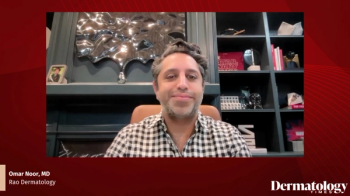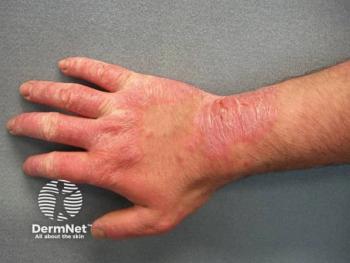
How OX40-Targeted Therapies Might Reshape Biologic Strategy in AD

Christopher Bunick, MD, PhD, discusses the evolving role of OX40-targeted biologics in atopic dermatitis treatment ahead of the upcoming RAD conference.
In an interview with Dermatology Times, Christopher Bunick, MD, PhD, associate professor of dermatology and translational biomedicine at Yale University School of Medicine, offered perspective on where investigational biologics targeting the OX40 and OX40 ligand (OX40L) pathway may eventually fit into the already complex atopic dermatitis (AD) treatment landscape.
“It’s a complicated atopic dermatitis landscape right now,” Bunick said. “We obviously have the oral JAK inhibitors. We have several, 4 FDA-approved biologics.”
However, he emphasized that the place of OX40/OX40L-directed therapies in that treatment paradigm remains to be determined, in part because researchers are only starting to learn part of the equation.
Bunick noted that full phase 3 data for OX40L-directed agents had not yet been released.
“We still are waiting on data on the phase 3 trials from the OX40 ligand targeting biologic,” he said. “So the answer is: We don't know the answer yet because we're still waiting on the full phase 3 trial data for all of these OX40 and OX40 ligand-targeting biologics to come out.”
Bunick previewed his planned remarks at the Revolutionizing Atopic Dermatitis (RAD) 2025 conference, where he will present a review of available trial results for these emerging agents.
“At RAD, we're going to review the interim data that we have from the phase 2 and phase 3 trials and talk about where we think that landscape, where these biologics, will fit into that landscape,” he said.
Although definitive conclusions are premature, Bunick's discussion highlights the growing clinical interest in upstream immune modulation in AD. By acting earlier in the T-cell activation cascade than traditional monotargeted cytokine inhibitors (such as those targeting IL-4, IL-13, or IL-31), the OX40/OX40L pathway may offer broader immunologic control and serve as a potential complement—or alternative—to existing therapies.
To hear more about OX40 inhibition from Bunick,
Newsletter
Like what you’re reading? Subscribe to Dermatology Times for weekly updates on therapies, innovations, and real-world practice tips.



















